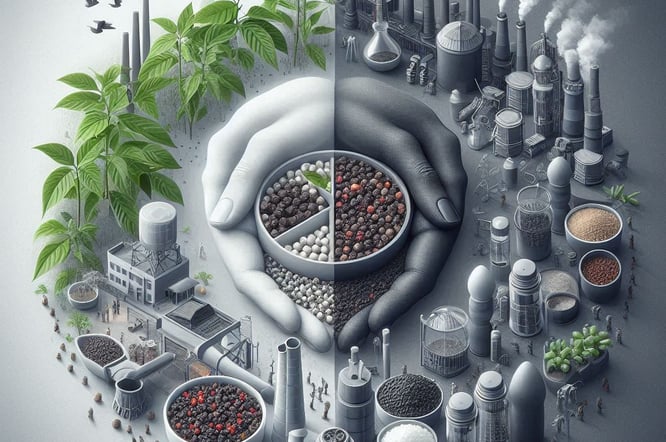The Latest Trends in Pepper Production in Indonesia
1/10/2024


Pepper production has long been a significant facet of Indonesia's agricultural landscape, contributing to the country's economy and international trade. As global demand for spices continues to grow, understanding the latest data on pepper production in Indonesia is crucial for stakeholders across the supply chain—from farmers to exporters. This blog post aims to review current trends in Indonesian pepper production and discuss their implications for the market.
Current Data and Trends
Recent reports indicate a notable increase in pepper production in Indonesia, with the country reaffirming its status as one of the leading global producers. Data from the Indonesian Ministry of Agriculture reveals that pepper production reached an unprecedented volume in the last harvest season. The primary varieties cultivated, such as black and white pepper, have shown resilience against adverse weather conditions that previously hampered yields.
Notably, the rise in production can also be attributed to improved agronomic practices and the introduction of high-yield pepper varieties. Many farmers are now adopting modern techniques, which not only enhance productivity but also ensure better quality of pepper produced. As a result, Indonesia is set to increase its market share in the global spice industry, reflecting a positive trend for local increase in exports.
Market Implications
The implications of these trends in pepper production for the Indonesian market are profound. Increased output not only promises to meet the growing demand for spices but also enhances the country's position within the global spice trade. This resurgence is critical for local economies, as many farmers rely heavily on pepper cultivation as their primary source of income.
Furthermore, as Indonesia’s pepper industry ramps up, we can expect fluctuations in global pricing. With disease management improvements and better export infrastructure, the competitive edge of Indonesian pepper will likely drive sustainability in production practices. This evolution could potentially stabilize prices in the long term, benefiting both producers and consumers.
Looking Forward
As we look to the future, the pepper production sector in Indonesia seems poised for growth. Continuous investment in research and development is essential to further refine farming techniques, enhance disease resistance, and improve yield quality. Understanding consumer preferences will also play a crucial role in determining which varieties gain prominence in the coming years.
In conclusion, the latest data on pepper production in Indonesia showcases a vibrant sector with increasing trends that possess significant implications for both the domestic and international markets. By keeping abreast of these developments, stakeholders can better navigate the evolving landscape of the pepper industry, harnessing opportunities for growth and sustainability.






